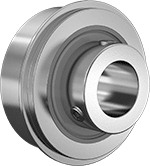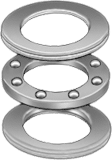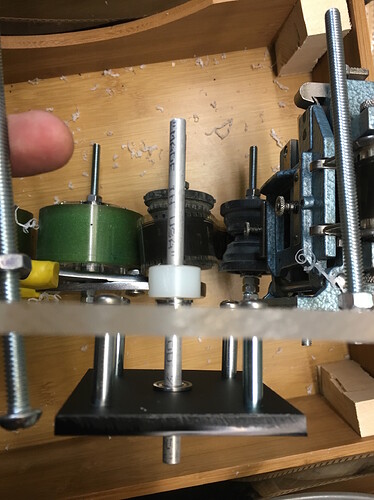Matthew, hopefully you’ll take this as constructive criticism. Also realize, I’m not a professional in any of this, and these are just by thoughts based on the limited knowledge I have.
I’d like to understand more about why you’ve chosen to have the reels lay horizontally than vertically. I believe this is leading to more expense and potential risk of failure due to the bearings.
The bearings you’ve chosen, I believe are actually pillow bearings, but may indeed be a needle bearing internally. Either way, mounting them as you’ve done doesn’t seem to fit with their design intent. I think they are only really meant to support radial loads vs axial ones.
In addition to potentially using the wrong type of bearing, it’s also increasing cost because you need one on each side of the platform. There are tapered bearings that can support both axial and radial loads. Mounting the reel/plate on one of these could allow you to use only a single bearing and you wouldn’t risk popping the bearing apart by putting axial load on a bearing that wasn’t meant to bear it.
Alternatively, there’s many other types of bearings that have extensions of the inner raceway to accommodate attaching it to a shaft, and the shaft could be held by either a set screw or eccentricity depending on the bearing selected. Maybe even a flanged bearing could work, though I think the flange is really only meant to help with alignment, not support axial loads.
Now, if you were to place the reels vertically, you could probably reduce cost further because you could use just a common radial bearing, as there would be negligible friction in the axial direction.
Take a look at bocabearings.com. We may be able to find cheaper sites, but they have a good selection, nice diagrams, and good explanations for each bearing type.
There’s also some interesting bearings like the U-channel ones, the rubberized ones (mentioned as having uses in paper handling), etc. I’d think for Kinograph we could use the cheaper bearings as we won’t be getting into the high-heat, high-speed, or chemical resistivity that the various ceramic, stainless, and rubber-shielded bearings are meant for.








